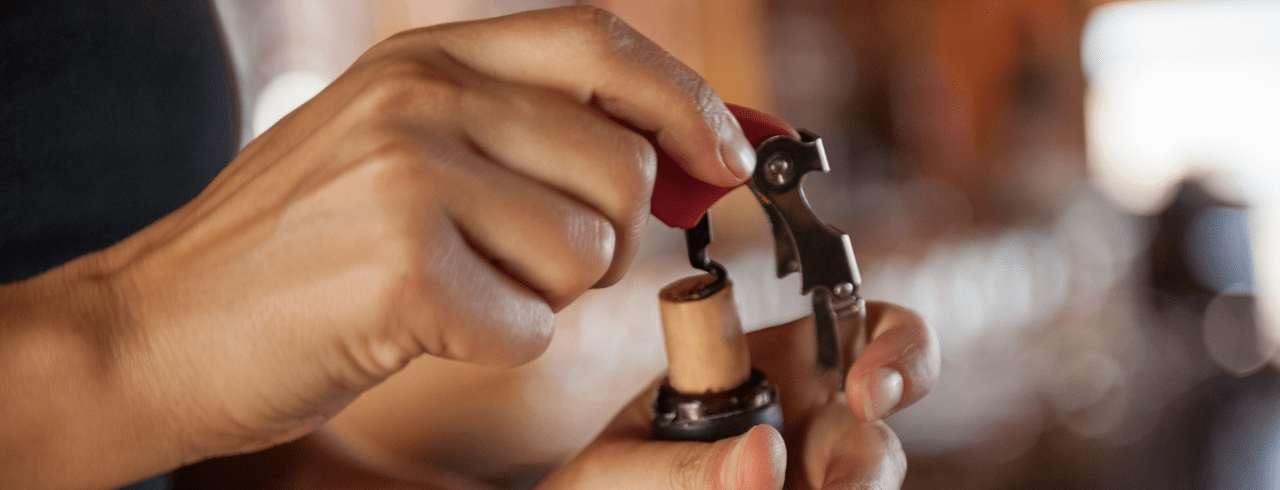
How to Keep an Open Bottle of Wine Fresh
From personal experience, we know that few products can bring more joy than a delicious bottle of wine.
From light, refreshing whites to effervescent sparkling options, each vino possesses a personality with the capacity to brighten any meal or occasion.
But, what happens when you don’t finish your bottle? It all depends on how you store it.
Poorly-stored open wine can quickly over-oxidize, diminishing in taste and appearance. While a well-maintained bottle often tastes fresh and looks beautiful many days after opening.
So, how can you preserve your opened wine’s quality, taste and structure?
Keep reading for expert insight on storing wine so you can enjoy the rest of your bottle days after you open it.
1. Recork Your Bottle
The first key to keeping wine fresh is minimizing its exposure to harmful, excess oxygen.
While there are multiple ways to accomplish this (as we discuss below), the quickest and easiest way is to re-cork your wine immediately after serving.
Corks help keep open wine fresh by serving as a barrier between your alcohol and harmful gases that surround it, thereby preserving the quality of your bottle and extending its lifespan.
To properly recork, all you need to is save the cork after opening and re-insert it into your bottle in the same direction as you found it.
It is essential that you do not flip the cork and plug its external side into your bottle, as this end is typically unhygienic due to constant exposure to germs of the outside world.
Wine Insiders Tip: For further insight on the value of wine corks, check out our Guide to Wine Corks and Screw Caps.
2. Keep Your Bottles in a Cool, Dark Place
Unopened wine is relatively resilient to the environmental changes it experiences on the journey from winery to retailer to you.
Conversely, opened wine is hypersensitive to its surroundings, making it prone to spoilage not too long after you pop its cork.
To protect your open bottles, it is essential that you keep them in a cool and dark place where you can control your wine’s storage temperature and access to light.
Your bottles typically survive best in a wine refrigerator or chiller (kept in a dark room), but your traditional refrigerator can also work well — particularly if you store your vino for more extended periods.
3. Understand the Storage Needs of Reds and Whites
While a cool, dark place is the baseline environment for all open bottles of wine, you can enhance your storage techniques by considering the unique characteristics of specific types of vino.
For example, red and white wines have divergent structures and flavor profiles, so it’s little surprise they behave differently once opened.
While both can survive nicely in a wine fridge, chiller or traditional refrigerator, their maximum storage capacity varies.
Low-tannin reds, like Pinot Noir, can survive 2-3 days in ideal storage conditions. High-tannin reds, like Cabernet Sauvignon, can stay fresh for up to 5 days.
White wines, on the other hand, often retain their quality for longer periods.
Low-acidity whites, like Chardonnay, comfortably survive 3-4 days post opening. High-acidity options, like Riesling, can thrive after 5 days of storage without sacrificing quality.
Wine Insiders Tip: For extra tips on adequately storing red and white wines, check out our Guide to Caring for Open Wine.
4. Transfer Your Wine into Smaller Glass Bottles
Likely the biggest reason open wine spoils is over-oxidation, which muddies a wine’s color, tarnishes its flavor and compromises its aromas. One way to reduce the risk of these outcomes is to transfer your wine into smaller glass bottles before storing them in a cool, dark place.
This method is effective because it reduces the amount of surface area your vino contacts, thereby minimizing the amount of oxygen exposure it receives.
It also makes it easier to store a greater number of wines, as smaller bottles (like the ones we discuss below) can take up 50-75% less space than a standard option, leaving more room in your wine/traditional fridge.
5. Buy Smaller Bottle Sizes
This tip may sound similar to our last piece of advice, but it offers an entirely different way to make the most of your wine and ease the burden on your wallet.
Reduced-size wine bottles, such as the “half” (375 ml) and “split” (187.5 ml) styles, can be excellent options for solo drinking or smaller gatherings. They are notably cheaper, potentially allowing you to splurge on varietals/blends you may avoid at larger sizes (i.e., higher prices).
These smaller options make it easier to complete one bottle over the course of a meal or event, allowing you to fully enjoy your vino without the hassle of storing it later.
Plus, these smaller bottles also help you utilize our previous tip, making excellent storage vessels for the unfinished contents of a larger bottle.
Wine Insiders Tip: Check out our Wine Bottle Sizes Guide for more detailed breakdowns of small, standard and large serving options.

Time to Stock Up on Wine!
Now that you understand how to store open wine, it’s time to explore Wine Insiders’ fantastic selection of delicious varietals and blends.
Plus, if you want to expand your collection in style, we also offer a range of excellent 6 and 12-bottle wine sets, as well as expert-curated collections by our celebrity partners: Martha Stewart, Geoffrey Zakarian, and Ludo Lefebvre.
Whether you are a wine newbie or a budding sommelier, you can rest assured that Wine Insiders has the vino you need at the prices you deserve.